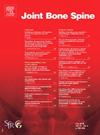Childhood-onset versus adult-onset Takayasu arteritis: A study of 239 patients from China
IF 3.8
3区 医学
Q1 RHEUMATOLOGY
引用次数: 0
Abstract
Objective
We aimed to compare clinical features, vascular involvement, disease activity, and management between Chinese patients with childhood-onset Takayasu arteritis (cTAK) and adult-onset Takayasu arteritis (aTAK).
Methods
In total, 239 patients with TAK from the pediatric and adult rheumatology departments of two tertiary care centers were retrospectively evaluated. Data on demographic characteristics, laboratory results, disease activity, vascular involvement, and management regimens were collected and compared between the cTAK and aTAK patients.
Results
In total, 85 cTAK and 154 aTAK patients were enrolled. There was a significant difference in the female/male ratio between the cTAK and aTAK groups (2.3:1 vs. 10.8:1, P < 0.001). Fever, hypertension, arrhythmia, and heart failure were more frequent in the cTAK group. The median Indian Takayasu Clinical Activity Score-scores were significantly higher in the cTAK group compared to the aTAK group (5 vs. 3, P = 0.004). The prevalence of supra-aortic artery involvement was significantly higher in the aTAK group than in the cTAK group (P < 0.05). The rate of involvement of coronary and renal arteries was significantly lower in the aTAK group than in the cTAK group (P < 0.05). Compared to the aTAK patients, the cTAK patients were more likely to be treated with biological agents (76.5% vs. 9.1%, P < 0.001).
Conclusion
cTAK patients had more severe disease and inflammation. Coronary and renal artery involvement was more common among cTAK patients, whereas supra-aortic artery involvement was more common in aTAK patients increasing their risk of cerebral infarction. Biologics were used more frequently in cTAK patients.
儿童发病与成人发病的高安市动脉炎:对 239 名中国患者的研究。
目的我们旨在比较中国儿童型高安动脉炎(cTAK)和成人型高安动脉炎(aTAK)患者的临床特征、血管受累情况、疾病活动性和治疗方法:方法:对两家三级医疗中心的儿童和成人风湿病科共239名TAK患者进行了回顾性评估。收集了人口统计学特征、实验室结果、疾病活动性、血管受累和治疗方案等方面的数据,并对 cTAK 和 aTAK 患者进行了比较:结果:共有 85 名 cTAK 和 154 名 aTAK 患者入选。cTAK 组和 aTAK 组的女性/男性比例存在明显差异(2.3:1 vs. 10.8:1,P <0.001)。发热、高血压、心律失常和心力衰竭在 cTAK 组更为常见。与 aTAK 组相比,cTAK 组的印度 Takayasu 临床活动评分中位数明显更高(5 对 3,P = 0.004)。aTAK 组主动脉上动脉受累率明显高于 cTAK 组(P < 0.05)。aTAK 组的冠状动脉和肾动脉受累率明显低于 cTAK 组(P < 0.05)。与 aTAK 患者相比,cTAK 患者更有可能接受生物制剂治疗(76.5% 对 9.1%,P<0.001)。结论:cTAK 患者的病情和炎症更为严重,冠状动脉和肾动脉受累在 cTAK 患者中更为常见,而主动脉上动脉受累在 aTAK 患者中更为常见,这增加了他们发生脑梗塞的风险。cTAK 患者更常使用生物制剂。
本文章由计算机程序翻译,如有差异,请以英文原文为准。
求助全文
约1分钟内获得全文
求助全文
来源期刊

Joint Bone Spine
医学-风湿病学
CiteScore
4.50
自引率
11.90%
发文量
184
审稿时长
25 days
期刊介绍:
Bimonthly e-only international journal, Joint Bone Spine publishes in English original research articles and all the latest advances that deal with disorders affecting the joints, bones, and spine and, more generally, the entire field of rheumatology.
All submitted manuscripts to the journal are subjected to rigorous peer review by international experts: under no circumstances does the journal guarantee publication before the editorial board makes its final decision. (Surgical techniques and work focusing specifically on orthopedic surgery are not within the scope of the journal.)Joint Bone Spine is indexed in the main international databases and is accessible worldwide through the ScienceDirect and ClinicalKey platforms.
 求助内容:
求助内容: 应助结果提醒方式:
应助结果提醒方式:


